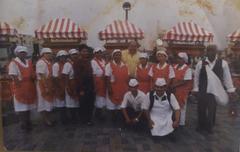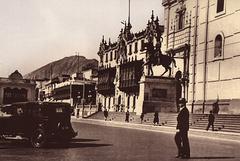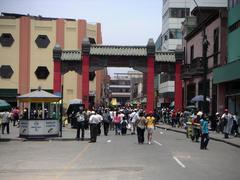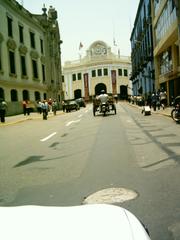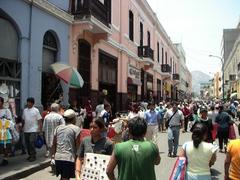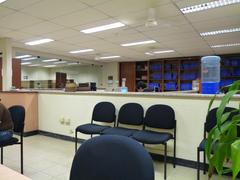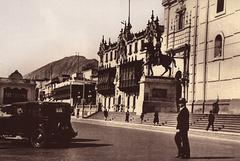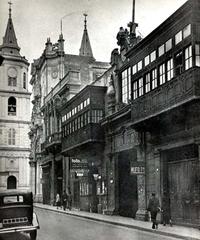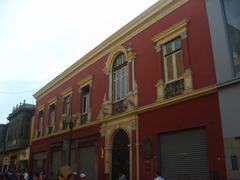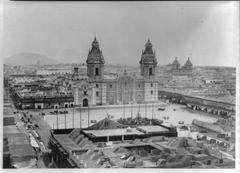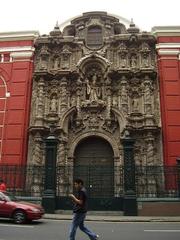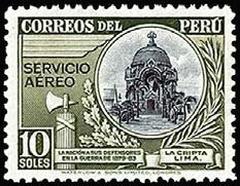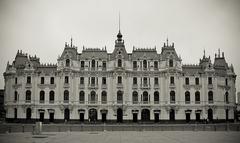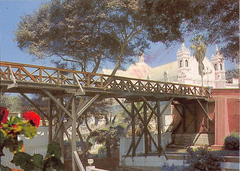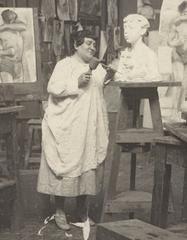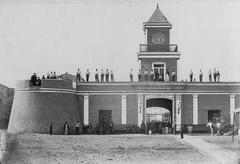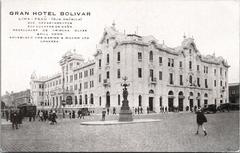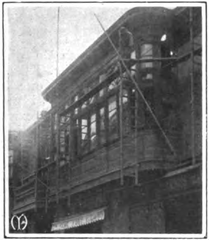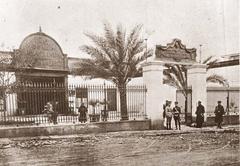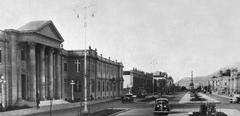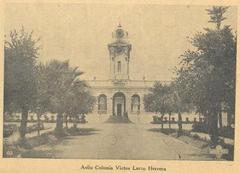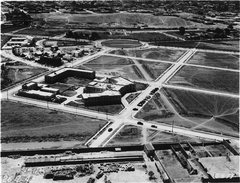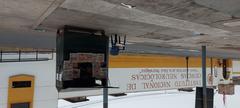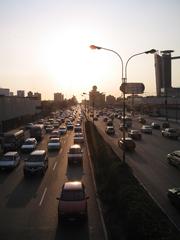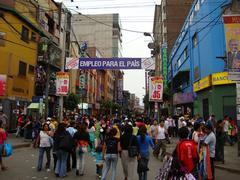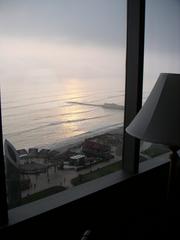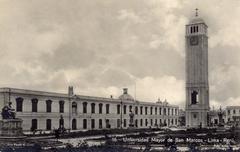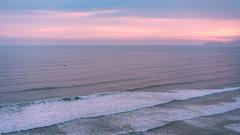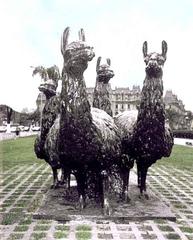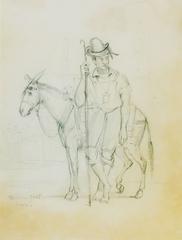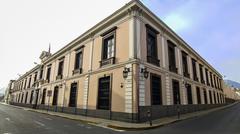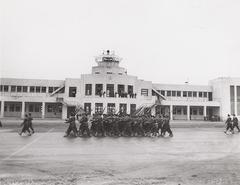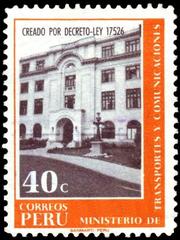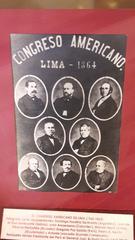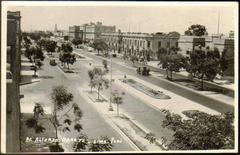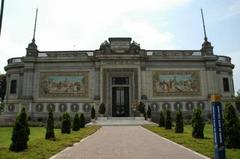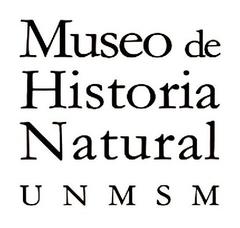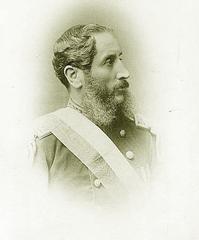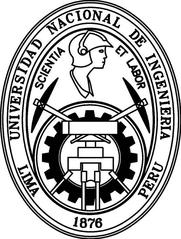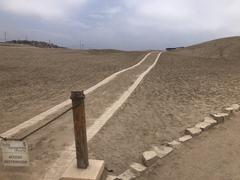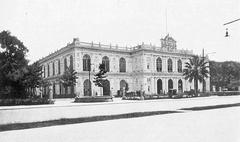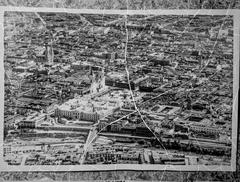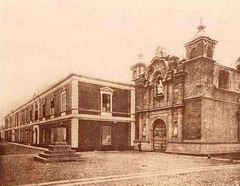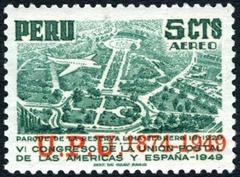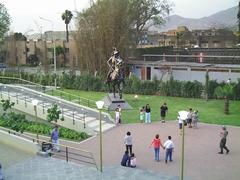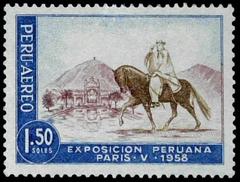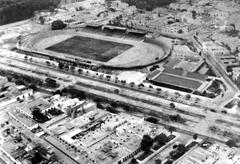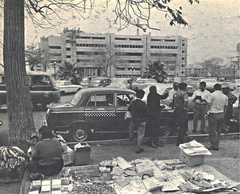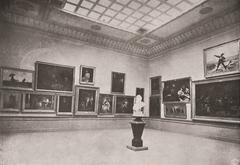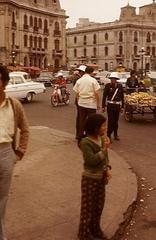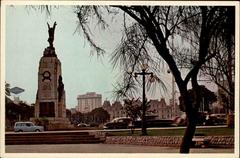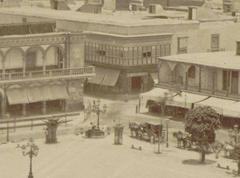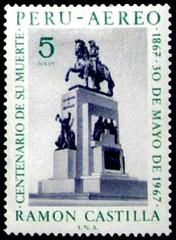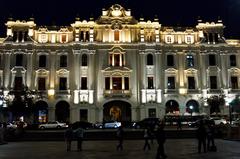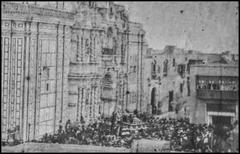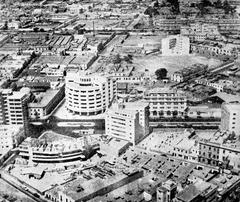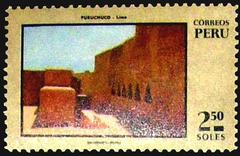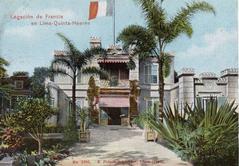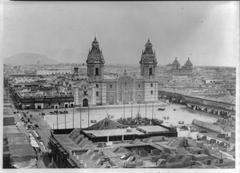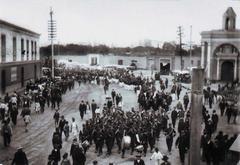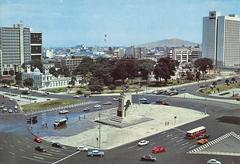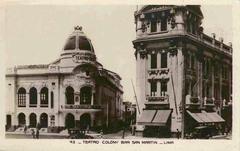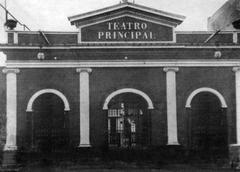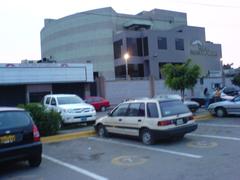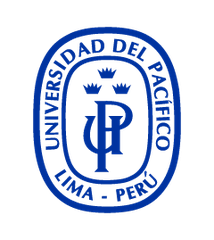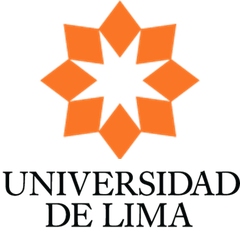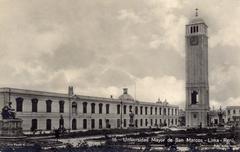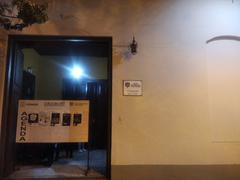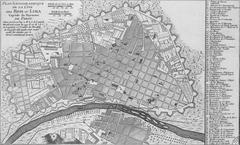Comprehensive Guide to Visiting Lima, Lima Province, Peru
Date: 13/08/2024
Captivating Introduction
Imagine a city where history, culture, and modernity blend seamlessly, creating an extraordinary tapestry of experiences. Welcome to Lima, the bustling capital of Peru, often dubbed the ‘Gastronomical Capital of the Americas’ (Lonely Planet). Steeped in rich history, Lima’s roots stretch back thousands of years to vibrant pre-Columbian communities. This ancient allure is encapsulated in sites like Pachacamac, an ancient religious center revered even by the Spanish conquistadors (Britannica). Later, the city became a cornerstone of the Spanish colonial empire, boasting magnificent architecture that still stands today. Picture walking through the Plaza de Armas, where the whispers of conquistadors blend with the vibrant buzz of modern life (Discover Walks). Lima’s historic heart, a UNESCO World Heritage site, offers a window into the past with its stunning churches, grand mansions, and imposing government buildings. Beyond its historical and architectural gems, Lima is a modern metropolis teeming with nearly ten million residents. The city is a culinary paradise, where flavors from indigenous, Spanish, African, and Asian influences come together in dishes that are nothing short of magical (National Geographic). From ceviche to lomo saltado, your taste buds are in for a treat. Whether you’re exploring the bohemian district of Barranco, marveling at pre-Columbian artifacts in the Museo Larco, or enjoying the modern vibrancy of Miraflores, Lima promises an adventure like no other (My Adventures Across the World).
Table of Contents
- Discovering Lima: A Journey Through Time and Culture
- Visitor Tips for Lima, Lima Province, Peru
- Call to Action
- References
Discovering Lima: A Journey Through Time and Culture
A City of Legends: Pre-Columbian and Early Colonial Periods
Lima, the bustling capital of Peru, has roots that stretch back thousands of years. One of the most intriguing sites is Pachacamac, an ancient religious center that was so rich and revered that even the Spanish conquistadors couldn’t resist its allure. When Francisco Pizarro demanded a ransom for the Inca chief Atahuallpa, much of the gold and silver came from this very place.
When the Spanish arrived in the 16th century, they found a land rich in history and culture. The indigenous people called the area ‘Limaq,’ meaning ‘yellow flower’ in Quechua. Though Pizarro initially named it ‘Ciudad de los Reyes’ (City of the Kings) when he founded it on January 18, 1535, the name ‘Lima’ is what stuck, and thank goodness for that! Imagine trying to fit ‘Ciudad de los Reyes’ on a postcard (Discover Walks).
Colonial Splendor and Struggles
Lima was chosen as the capital of the Viceroyalty of Peru over the ancient Inca capital, Cuzco, mainly because of its prime coastal location, perfect for shipping treasures back to Spain. The city flourished, and magnificent colonial architecture blossomed. Think stunning churches, grand mansions, and imposing government buildings. Lima was the place to be—until it wasn’t. Earthquakes in 1687, 1746, and 1940 put the city’s resilience to the test, but each time, Lima rose from the rubble (Britannica).
Architectural Wonders: A Walk Through History
Strolling through Lima’s Historic Center, a UNESCO World Heritage site, is like stepping back in time. The Plaza de Armas, for example, isn’t just a beautiful square; it’s where Francisco Pizarro founded the city. Surrounded by the Government Palace, the Cathedral of Lima, and the Archbishop’s Palace, this square has been the backdrop for countless historical events (Discover Walks). And let’s not forget the Church and Convent of San Francisco, famous for its catacombs where over 30,000 souls found their final resting place.
The Heartbeat of Independence
Lima was a hotbed of revolutionary fervor during South America’s fight for independence. It was here that Jose de la Riva-Aguero declared Peru’s independence from Spain in 1821. The city became a magnet for leaders like Simón Bolívar and José de San Martín, who used Lima as their base for liberating the continent (Discover Walks).
Modern Marvels and Cultural Richness
Fast forward to today, and Lima is a sprawling metropolis with nearly ten million residents. It’s a place where the past and present coexist in fascinating ways. The Museo Larco and the Museo de la Nacion offer glimpses into Peru’s rich pre-Columbian history, while areas like Miraflores and Barranco showcase the city’s modern vibrancy (My Adventures Across the World).
Hidden Gems and Local Secrets
For a taste of something off the beaten path, explore districts like Pueblo Libre or Magdalena del Mar. These neighborhoods offer top-notch museums and a more authentic vibe. And don’t miss the Huaca Pucllana in Miraflores, an ancient adobe-brick pyramid that offers a window into Lima’s pre-Columbian past.
A Culinary Adventure
Lima’s food scene is legendary, earning it a spot as one of the world’s top culinary destinations. Imagine savoring dishes that blend indigenous, Spanish, African, and Asian influences. From ceviche to lomo saltado, your taste buds are in for a treat (National Geographic).
Overcoming Modern Challenges
Lima isn’t without its challenges, like traffic congestion and the ever-present threat of earthquakes. But the city is continually evolving, especially with infrastructure improvements for upcoming events like the 2027 Pan American Games (Sherlock Comms).
Join the Adventure with Audiala
Ready to explore Lima? Download the Audiala app for an insider’s guide to this incredible city. Whether you’re interested in history, food, or hidden gems, Audiala has you covered. Dive into Lima’s rich tapestry and discover its secrets with your new travel companion, Audiala!
Visitor Tips for Lima, Lima Province, Peru
Best Time to Visit
Lima’s climate is influenced by its coastal location, resulting in mild temperatures and high humidity throughout the year. However, the best time to visit Lima is during the summer months from December to March when the weather is warm and sunny, making it ideal for outdoor activities and beach visits (Lonely Planet). During this period, the average daytime temperature hovers around 24ºC (75°F), and the city experiences minimal rainfall.
For those interested in cultural events, the winter months from June to August are also a good time to visit. Despite the cooler temperatures and frequent fog, Lima hosts numerous festivals that bring color and vibrancy to the city (Lonely Planet). However, this is also the peak tourist season, so expect higher prices and crowded attractions.
Accommodation
Lima offers a wide range of accommodation options to suit all budgets. For a safe and comfortable stay, consider booking a hotel or Airbnb in the neighborhoods of Miraflores or Barranco. These areas are known for their safety, vibrant nightlife, and proximity to major attractions (Latin America Backpacking).
Transportation
Navigating Lima can be challenging due to its sprawling nature and heavy traffic. Here are some essential transportation tips:
- Public Transportation: Lima’s public transportation system includes buses and the Metropolitano, a bus rapid transit system. While affordable, these options can be crowded and confusing for first-time visitors. It’s advisable to use a transportation card, which can be purchased at various stations (Intrepid Scout).
- Taxis and Ride-Sharing: Taxis are plentiful but often unregulated. To avoid scams, use ride-sharing services like Uber or InDriver, which offer a safer and more reliable alternative (Latin America Backpacking).
- Walking: Walking is a great way to explore neighborhoods like Miraflores and Barranco. However, exercise caution in less touristy areas and avoid walking alone at night (Travellers Worldwide).
Safety Tips
While Lima is generally safe for tourists, it’s essential to stay vigilant and follow these safety tips:
- Avoid Flashy Displays of Wealth: Petty crimes like pickpocketing and bag snatching are common in crowded areas. Keep your valuables hidden and use a money belt to store important items (Latin America Backpacking).
- Stay in Safe Neighborhoods: Stick to well-known and safer neighborhoods like Miraflores and Barranco. Avoid areas like Callao, which are known for higher crime rates (Latin America Backpacking).
- Be Cautious at Night: Avoid walking alone at night, especially in less populated areas. Use reputable taxi or ride-sharing services to get around after dark (Travellers Worldwide).
- Political Unrest: Be aware of potential political protests and avoid large gatherings, especially near the Historic Center (My Adventures Across the World).
Cultural Etiquette
Understanding and respecting local customs can enhance your experience in Lima. In Lima, it’s common to greet with an ‘air kiss’ on the cheek. Practice it with locals to blend in!
- Greetings: A handshake is a common greeting, but close friends may exchange a kiss on the cheek.
- Tipping: Tipping is appreciated but not mandatory. A 10% tip is customary in restaurants.
- Dress Code: Dress modestly when visiting religious sites. Casual attire is acceptable in most other settings.
Must-Visit Attractions
Lima is rich in history and culture, offering numerous attractions for visitors:
- Plaza de Armas: Also known as Plaza Mayor, this historic square is the heart of Lima and a UNESCO World Heritage site. It features the Government Palace, the Cathedral of Lima, and the Archbishop’s Palace (PlanetWare).
- Miraflores: This upscale district is known for its parks, shopping centers, and stunning coastal views. Don’t miss the Malecón, a scenic walkway along the cliffs overlooking the Pacific Ocean (Intrepid Scout).
- Barranco: Known for its bohemian vibe, Barranco is home to art galleries, colorful murals, and lively bars. It’s a great place to experience Lima’s nightlife and creative scene (Intrepid Scout).
- Museo Larco: This museum houses an extensive collection of pre-Columbian art and artifacts, offering a fascinating glimpse into Peru’s ancient civilizations (PlanetWare).
- Huaca Pucllana: An ancient adobe pyramid located in Miraflores, Huaca Pucllana dates back to the Lima culture (200-700 AD). Guided tours are available to explore this archaeological site (Travellers Worldwide).
Culinary Delights
Lima is renowned for its culinary scene, offering a blend of traditional Peruvian flavors and modern innovation. Here are some must-try dishes:
- Ceviche: A classic Peruvian dish made from fresh raw fish marinated in citrus juices, typically served with onions, cilantro, and chili peppers.
- Lomo Saltado: A stir-fry dish combining marinated strips of beef with onions, tomatoes, and fried potatoes, often served with rice.
- Anticuchos: Skewers of marinated and grilled meat, usually beef heart, served with a spicy sauce.
- Pisco Sour: Peru’s national cocktail made from pisco (a type of brandy), lime juice, simple syrup, egg white, and bitters.
For an unforgettable dining experience, consider visiting some of Lima’s top-rated restaurants, such as Central, Maido, and Astrid y Gastón, which are frequently listed among the world’s best (Travel + Leisure).
Practical Information
- Currency: The official currency is the Peruvian Sol (PEN). ATMs are widely available, and credit cards are accepted in most establishments.
- Language: Spanish is the official language. While English is spoken in tourist areas, learning a few basic Spanish phrases can be helpful.
- Electricity: Lima uses a 220-volt electrical system with Type A and Type C outlets. Visitors from countries with different voltage standards should bring a converter.
- Emergency Numbers: The general emergency number in Peru is 105. For tourist police, dial 0800-22221.
Call to Action
Ready to uncover Lima’s secrets? Download Audiala, your ultimate tour guide app, and let the adventure begin. With Audiala, you’ll have expert insights and hidden gems at your fingertips. Don’t miss out—explore Lima like a local!
Call to Action
Lima, with its rich historical tapestry, vibrant modern culture, and unparalleled culinary scene, is a city that promises to captivate every traveler. From its pre-Columbian origins and colonial grandeur to its role as a revolutionary hub and modern-day metropolis, Lima’s story is one of resilience and renewal (Britannica). The city offers a unique blend of experiences, from the bustling streets of the Historic Center to the tranquil beauty of its coastal districts. Visitors can immerse themselves in the rich cultural traditions, explore hidden gems like the Huaca Pucllana, and savor the flavors that have earned Lima its gastronomical reputation (Intrepid Scout). Despite its challenges, including traffic congestion and the threat of earthquakes, Lima continues to evolve and thrive, offering new experiences and adventures at every turn (Sherlock Comms). Ready to uncover the magic of Lima? Download Audiala, your ultimate tour guide app, and let the adventure begin. With Audiala, you’ll have expert insights and hidden gems at your fingertips. Don’t miss out—explore Lima like a local!
References
- Britannica. (n.d.). History of Lima
- Discover Walks. (n.d.). 20 fascinating facts about Lima’s history and culture
- My Adventures Across the World. (n.d.). Visiting Lima: Travel tips
- National Geographic. (n.d.). Fast facts
- Lonely Planet. (n.d.). Best time to visit Lima
- Intrepid Scout. (n.d.). Things to do in Lima, Peru
- Sherlock Comms. (n.d.). Lima’s 2027 Pan American Games: Transforming Peru’s sports and economy
























